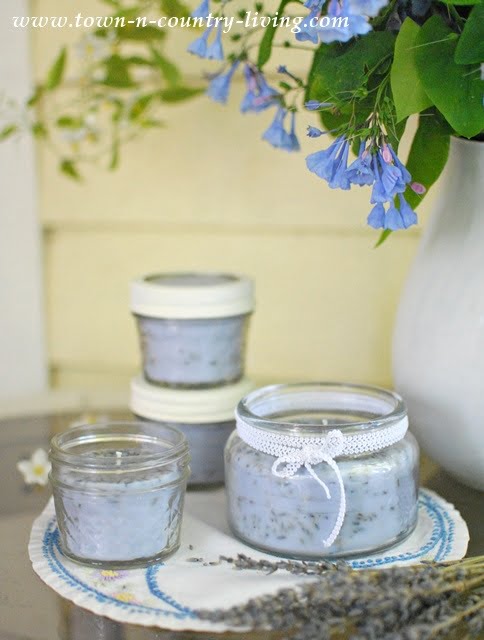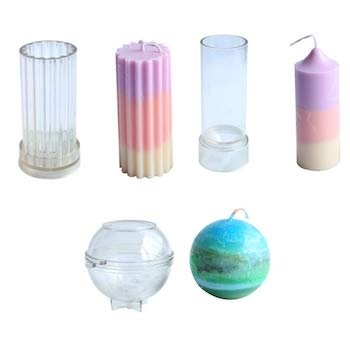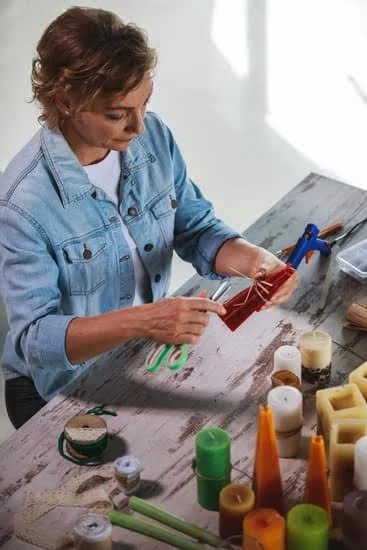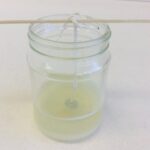Are you looking to elevate your space with the enticing aroma of scented candles? Look no further. In this article, we will explore the art of making scented candles and provide detailed reviews to help you create the perfect ambiance in your home. Whether you are a beginner or an experienced candle maker, we’ve got all the tips and tricks you need to master the art of crafting beautifully scented candles.
When it comes to creating scented candles, there are many factors to consider – from choosing the right wax to selecting the perfect fragrance. We’ll walk you through the process step by step and provide a comprehensive comparison of different wax options, discuss essential oils versus fragrance oils, and delve into the role of wicks in creating the perfect scent throw.
In addition to learning about the technical aspects of candle making, we will also share expert tips for enhancing scent throw and longevity in scented candles. So, whether you’re looking to create a calming atmosphere for relaxation or a warm and inviting space for entertaining, our guide will help you become a pro at making and reviewing scented candles. Stay tuned as we embark on this aromatic journey together.
Choosing the Right Wax
When it comes to making scented candles, choosing the right wax is a crucial step in the process. There are several options available, but the most popular choices are soy wax, paraffin wax, and beeswax. Each type of wax has its own unique characteristics and it’s important to understand the differences between them in order to make an informed decision for your candle making.
Soy wax is derived from soybean oil and is known for its clean and long-lasting burn. It is also biodegradable and easy to clean up if spilled. On the other hand, paraffin wax is a byproduct of petroleum refining and is widely used in candle making due to its affordability and ability to hold large amounts of fragrance.
Beeswax, on the other hand, is all-natural and has a subtle honey-like aroma. It burns longer than paraffin and soy waxes but does not hold fragrance as well.
In making scented candles reviews, it’s important to consider not just the scent throw and burn time, but also the environmental impact and sustainability of the chosen wax. Each type of wax has its own pros and cons, so it’s important to weigh them carefully before making a decision.
Ultimately, the choice of wax will greatly affect the overall quality of your scented candles, so it’s worth taking the time to make an informed choice based on your specific needs and preferences.
Essential Oils or Fragrance Oils
When it comes to making scented candles, one of the most important decisions to make is whether to use essential oils or fragrance oils. Both options have their own unique benefits and drawbacks, and the choice ultimately depends on personal preference and the desired outcome of the candle.
Essential Oils
Essential oils are derived from natural sources such as flowers, herbs, and fruits. They are known for their therapeutic properties and often have a more subtle and natural scent compared to fragrance oils. Many candle makers prefer using essential oils as they are considered a more natural option that aligns with a holistic lifestyle.
Fragrance Oils
Fragrance oils, on the other hand, are synthetic scents that are specifically formulated for candle making. They come in an extensive variety of scents that may not be achievable with essential oils alone. Fragrance oils also tend to have a stronger scent throw, meaning they can fill a room with fragrance more effectively than essential oils.
Regardless of which option is chosen, it’s important to carefully consider the quality and compatibility of the chosen oils with the wax being used. Additionally, some individuals may have sensitivities to certain fragrances, so it’s crucial to keep this in mind when selecting oils for candle making.
In the end, deciding between essential oils and fragrance oils comes down to personal preference and intended use. Some candle makers enjoy using a combination of both types of oils to create unique and complex scents in their homemade candles. Ultimately, both essential and fragrance oils can be effective options for infusing candles with delightful scents that will be appreciated by reviewers writing making scented candles reviews.
The Role of Wick and Wick Size in Creating the Perfect Scented Candle
When it comes to creating the perfect scented candle, the role of the wick and its size should not be underestimated. The wick is an essential component in determining how well your candle will burn and release its fragrance. Choosing the right wick and size for your scented candle is crucial in achieving the best results.
Choosing the Right Wick
There are various types of wicks available in the market, each designed for specific purposes. When making scented candles, it’s important to consider factors such as the type of wax being used, the diameter of the container, and the desired burn time. Cotton wicks are a popular choice for scented candles due to their clean burn and minimal soot production. However, wood or ribbon wicks can also offer unique features that may enhance your candle-making experience.
The Importance of Wick Size
The size of the wick also plays a significant role in how your scented candle will perform. A wick that is too small may result in a tunneling effect, where only a small portion of the wax melts and releases fragrance.
On the other hand, a wick that is too large may cause excessive flickering, smoking, and soot buildup. It’s crucial to match the wick size with the diameter of your container to ensure an even burn and optimal scent throw.
Tips for Testing Wick Options
As part of making scented candles reviews, it’s important to experiment with different wick options to find the perfect match for your chosen wax and fragrance combination. Conducting test burns with various wick sizes can help determine which one produces the best results for your specific candle-making project. Additionally, keeping detailed notes on each test will allow you to make informed decisions when creating future batches of scented candles.
Step-by-Step Guide
Making scented candles reviews involves understanding the detailed process of creating these aromatic and decorative elements. Below is a step-by-step guide to help you in making scented candles at home:
- First, gather all the necessary supplies such as wax, fragrance oils, wicks, containers, and a heat source (such as a double boiler or microwave).
- Next, prepare the containers by cleaning and ensuring they are dry. Place the wick in the center of each container using a wick holder to keep it in place.
- Melt the wax in the double boiler or microwave, stirring occasionally to ensure even melting.
- Add your chosen fragrance oils to the melted wax according to the recommended usage rate for optimal scent throw.
- Pour the scented wax into the prepared containers, being careful not to disturb the wick placement.
- Allow the candles to cool and harden for several hours before trimming the wick and testing their scent throw by burning them.
Making scented candles reviews also require attention to detail and precision when following these steps. By mastering this process, you can create high-quality scented candles with exceptional scent throw and longevity.
Additionally, it is essential to take safety precautions when making scented candles, such as working in a well-ventilated area and using caution around hot wax. Following these guidelines will help you create beautiful and fragrant homemade candles that will be enjoyed by yourself and others.
Tips and Tricks for Enhancing Scent Throw and Longevity in Scented Candles
When it comes to making scented candles, achieving the perfect scent throw and ensuring longevity of the fragrance are two crucial factors. To enhance scent throw, it is important to choose the right type of wax and fragrance oils, as well as paying attention to the size and material of the wick. Additionally, there are several tips and tricks that can be employed to make sure your scented candles are fragrant and long-lasting.
One tip for enhancing scent throw in scented candles is to let them cure for at least a week before burning them. This allows the fragrance to fully integrate with the wax, resulting in a stronger scent when the candle is lit. Another tip is to use high-quality fragrance oils or essential oils with superior scent retention properties. This can make a significant difference in how well the scent carries throughout a room when the candle is burned.
In terms of increasing longevity in scented candles, using the proper wick size and material is essential. A larger wick will create a bigger flame, which may burn through the candle faster and diminish scent over time.
On the other hand, a wick that is too small may not create enough heat to release the fragrance effectively. By choosing the right wick size and material based on the type of wax used, you can optimize both burn time and scent throw.
Lastly, storing scented candles properly can help maintain their fragrance over time. Keeping them away from direct sunlight and extreme temperatures can prevent the oils from degrading or evaporating prematurely.
| Tips for Enhancing Scent Throw | Tips for Increasing Longevity |
|---|---|
| Let candles cure for at least a week before burning | Choose the proper wick size and material based on wax type |
| Use high-quality fragrance oils or essential oils | Store scented candles away from direct sunlight and extreme temperatures |
Conclusion
In conclusion, making scented candles is a creative and rewarding endeavor that allows individuals to customize their living spaces with beautiful aromas. Through the process of choosing the right wax, selecting the best scent options, and understanding the role of wick size, one can create high-quality scented candles that enhance any environment.
By following a step-by-step guide and utilizing tips and tricks for enhancing scent throw and longevity, anyone can master the art of making and reviewing scented candles.
Furthermore, as seen in various making scented candles reviews, there is a growing interest in this craft as people are becoming more conscious about the products they use in their homes. With the rise of homemade and natural products as well as the trend towards self-care practices, making scented candles has become increasingly popular.
Whether for personal use or gifting purposes, mastering this art allows individuals to elevate their surroundings with beautifully fragrant candles that they can be proud of creating.
Overall, by delving into the world of making and reviewing scented candles, enthusiasts have found not only an enjoyable hobby but also a sense of accomplishment in creating something unique and special. As more people embrace this craft, it’s clear that making scented candles will continue to be a beloved activity for those who appreciate both creativity and lovely fragrances.
Frequently Asked Questions
Is It Worth Making Your Own Scented Candles?
Making your own scented candles can be worth it if you enjoy the process of creating your own unique fragrances and want to customize the candles to your personal preferences. It can also be a fun and relaxing hobby for some people.
Is Making Scented Candles Profitable?
The profitability of making scented candles depends on various factors such as the cost of materials, time spent on production, and the demand for your products. With proper marketing and a good product, it is possible to turn a profit, but it may not be highly lucrative for everyone.
How Do You Make High Quality Scented Candles?
To make high quality scented candles, start by using high-grade wax and fragrance oils, as well as quality wicks and containers. Pay attention to proper temperature control during pouring and cooling to avoid imperfections in the finished product.
Testing different combinations of fragrance oils is key to finding the perfect scent blend that will appeal to customers. Lastly, take care in packaging and presenting the candles for a professional appearance.

Welcome to my candle making blog! In this blog, I will be sharing my tips and tricks for making candles. I will also be sharing some of my favorite recipes.





